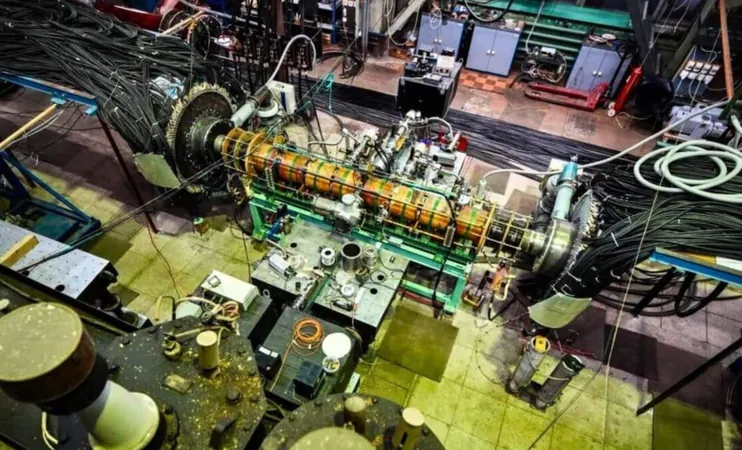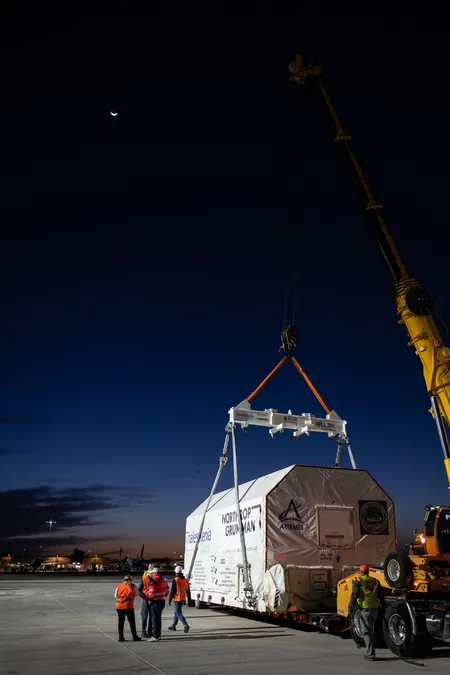
Russian Scientists Unveil Groundbreaking Plasma Engine Promising Mars Journey in Just 30 Days—Is SpaceX Ready for the Competition?
2025-04-04
Author: Jacques
In a bold stride toward revolutionizing space exploration, Russian scientists at Rosatom’s Troitsk Institute have unveiled a groundbreaking plasma propulsion system that could drastically reduce the journey time to Mars. This innovative engine has the potential to shorten the travel period to as little as 30 days, a remarkable leap compared to the several months required by current technology.
A Revolutionary Shift in Propulsion Technology
This cutting-edge plasma engine marks a significant departure from traditional chemical rockets. Unlike their combustion-based counterparts, which generate thrust through fuel combustion, this plasma engine employs electromagnetic fields to accelerate charged hydrogen ions to speeds of approximately 100 kilometers per second (360,000 km/h). To put this into perspective, conventional chemical rockets typically reach speeds around 4.5 kilometers per second, highlighting the substantial leap this technology represents.
The continuous thrust produced by the plasma engine allows spacecraft to steadily accelerate throughout their journey, contrasting sharply with conventional rockets, which often experience a burst of speed followed by a coasting phase. This steady increase in speed could not only shorten travel time but also enhance the safety of missions by reducing astronauts' exposure to space radiation, a significant concern for any long-term interplanetary travel.
Prototype Testing: A Step Towards the Stars
While still in its infancy, a functional prototype of the plasma engine has been developed and is currently undergoing testing in a meticulously designed vacuum chamber designed to simulate the rigors of space. This chamber measures 4 meters in width and 14 meters in length, effectively replicating the vacuum of outer space to assess the engine’s true capabilities. Operating at 300 kW of power in a pulse-periodic mode, the engine has a projected lifespan of 2,400 hours, which is sufficient for a round trip to Mars.
Once operational, the plasma engine may serve a dual purpose—not only aiding in interplanetary travel but also acting as a space tug to facilitate faster cargo transport between various planetary orbits, outpacing traditional methods significantly.
Hydrogen: The Ultimate Propellant
A crucial element of this propulsion advancement is the choice of hydrogen as the primary propellant. As the lightest element in the universe, hydrogen allows for highly efficient acceleration of particles. Its lower heat generation compared to other plasma forms leads to reduced wear on the engine’s components, increasing overall durability and effectiveness. Moreover, hydrogen is abundantly available in space, suggesting the possibility of harvesting it for future missions, thus creating a sustainable fuel source.
The Road Ahead: Challenges and Opportunities
Although the potential of this plasma engine technology is enormous, significant challenges remain. The performance metrics of the engine are yet to be independently verified, alongside concerns regarding its integration into existing spacecraft designs. Additionally, deploying such a system may require a nuclear power source, adding layers of complexity to both design and operation.
Nonetheless, the successful implementation of this plasma propulsion technology could represent a monumental leap forward in space travel, potentially changing the landscape of interplanetary exploration as we know it. With competition heating up between Russian innovations and SpaceX's Starship program, the next few years could redefine our journey to Mars. Stay tuned as we monitor this breakthrough—could swift Martian travel become our reality sooner than we think?









 Brasil (PT)
Brasil (PT)
 Canada (EN)
Canada (EN)
 Chile (ES)
Chile (ES)
 Česko (CS)
Česko (CS)
 대한민국 (KO)
대한민국 (KO)
 España (ES)
España (ES)
 France (FR)
France (FR)
 Hong Kong (EN)
Hong Kong (EN)
 Italia (IT)
Italia (IT)
 日本 (JA)
日本 (JA)
 Magyarország (HU)
Magyarország (HU)
 Norge (NO)
Norge (NO)
 Polska (PL)
Polska (PL)
 Schweiz (DE)
Schweiz (DE)
 Singapore (EN)
Singapore (EN)
 Sverige (SV)
Sverige (SV)
 Suomi (FI)
Suomi (FI)
 Türkiye (TR)
Türkiye (TR)
 الإمارات العربية المتحدة (AR)
الإمارات العربية المتحدة (AR)